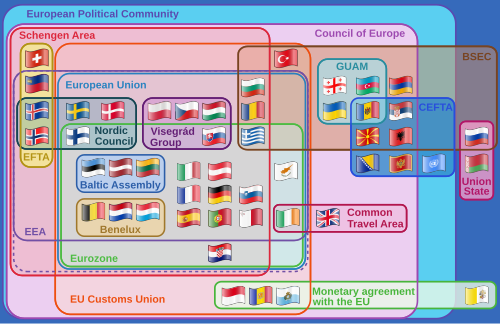This article has multiple issues. Please help improve it or discuss these issues on the talk page . (Learn how and when to remove these messages)
|
Europe is often divided into regions and subregions based on geographical, cultural or historical factors. Since there is no universal agreement on Europe's regional composition, the placement of individual countries may vary based on criteria being used. For instance, the Balkans is a distinct geographical region within Europe, but individual countries may alternatively be grouped into Central, Eastern, Southeastern, or Southern Europe.
Contents
- Subregions
- Historical divisions
- Contemporary
- Economic and political
- Other political
- Geographical
- Other groupings
- See also
- References
- External links
Regional affiliation of countries may also evolve over time. Malta was considered an island of North Africa for centuries, [1] but is now considered a part of Southern Europe. [2] The exact placement of the Caucasus has also varied since classical antiquity [3] and is now regarded by many as a distinct region within or partly in Europe. [4] Greenland, and partially Iceland, is geographically a part of North America but has been politically and culturally influenced by Northern European countries for more than a millennium. [5] As such, several regions are often included as belonging to a Greater Europe, including Anatolia, Cyprus, the South Caucasus, Siberia, Asian Kazakhstan (the part of Kazakhstan located east of European Kazakhstan), Greenland, as well as the overseas territories of EU member states.





